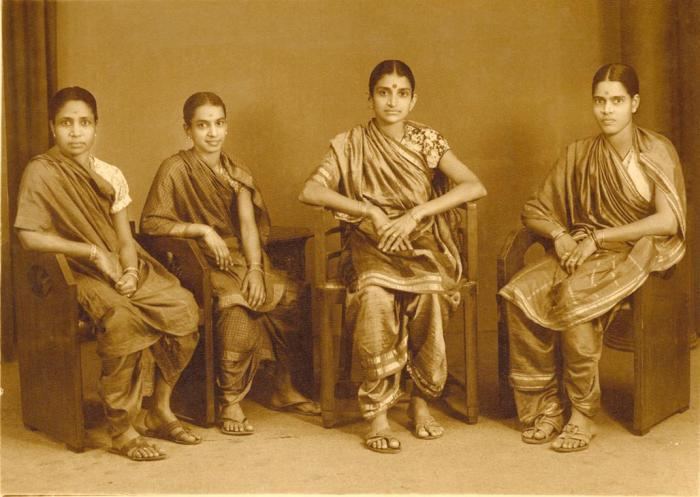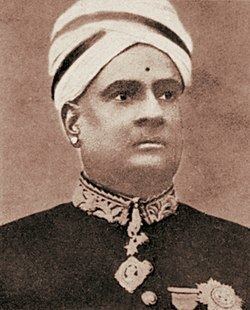 | ||
Brahacharanam is a sub-sect of the Iyer community of Tamil Brahmins. The word "Brahacharanam" is a corruption of the Sanskrit word Brhatcharanam (Sanskrit: ब्रहतचरनम्). Many Brahacharanam follow the Advaita Vedanta philosophy propounded by Adi Sankaracharya. However, some Brahacharanam are stauchly Saivite unlike followers of Adi Sankaracharya, or else adhere to "Sivadvaita" so to speak. The Brahacharanams, along with the Vadamas, form the major portion of the Kerala Iyer community.
Contents
- Etymology
- Origins
- Sub groups
- Culture
- Traditional Role
- List of Brahacharanams
- Chandrasekhar family Mangudi sub group
- Alladi family Pudur Dravida sub group
- Dr D V G family
- Other Notable Brahacharanam Iyers
- References
The Brahacharanams, like the Vadamas, have a distinctive martial tradition which differentiate them from other Iyer communities. Members of the community served as Senapatis or army commanders under the Chola kings Raja Raja Chola I and Rajendra Chola I.
Etymology

The word bruhat in Sanskrit means "great", "vast" or "significant" and the word charanam refers to feet. The name Brahacharanam can be thus literally translated as "feet of the greats" referring to the status of a Guru, and the Brahacharanam being those who follow in the footsteps of the Greats.
Origins
Their exact origins are not clear but their presence in the Tamil Kingdoms extends back at least to the reign of Parantaka Chola II, who is said to have brahmarayars as ministers. Many of the agraharam villages of the Brahacharanam also have very ancient origins.
According to some, they made their way into the Tamil country through the Satyamangalam Pass.
BrahaCharanam means Brahath means Vedas and Acharanam means one who follows verbatim. So it means strict follower of Vedic rituals.
Sub-groups
The Brahacharanam are divided into the following subgroups:
A significant number of Brahacharanams have migrated to Kerala, where they are part of the Kerala Iyer community. They have also migrated in large numbers to Puttur in Andhra Pradesh where they form the Puthur Dravida community.
Culture
Most Brahacharanam are worshippers of Shiva, and they cover their forehead with sacred ashes. Some used to wear Vibhuti in the Shape of the Sivalinga on their foreheads due their strong adherence to Lord Siva and no other. However, the Sathyamangalam group have some members who wear the vaishnava mark.
Women also dress like other Iyers. In the ancient times, the cloth worn by the women used to be of little more than a knee's length. Among the Milaganur Brahacharanam, the Adrishya Pondugal ceremony is celebrated in which four women, a widow and a bachelor are invited to a feast. This was done in order to propitate four women who disappeared due to the ill treatment of their mothers in law.
It has been documented that some Bracharanam who lived in places like Mangudi were such rigid saivaites that they would not even utter Govinda's name and lived a life of Stern austerity.
Traditional Role
The traditional function of Brahacharanams is to study and impart Vedic knowledge or officiate as priests in religious functions. However, there is evidence that in ancient times, they might have also served in the army or in civil and administrative services. During the Chola period, members of the community (especially the Pazhamaneri Brahacharanam) even served as army commanders. Senapathi Krishnan Raman was the Commander-in-chief of the Imperial Chola army of Rajendra Chola I. Brahacharanam also consider themselves to be among the first followers of Adi Shankaracharya.
List of Brahacharanams
Some famous Brahacharanams are:
